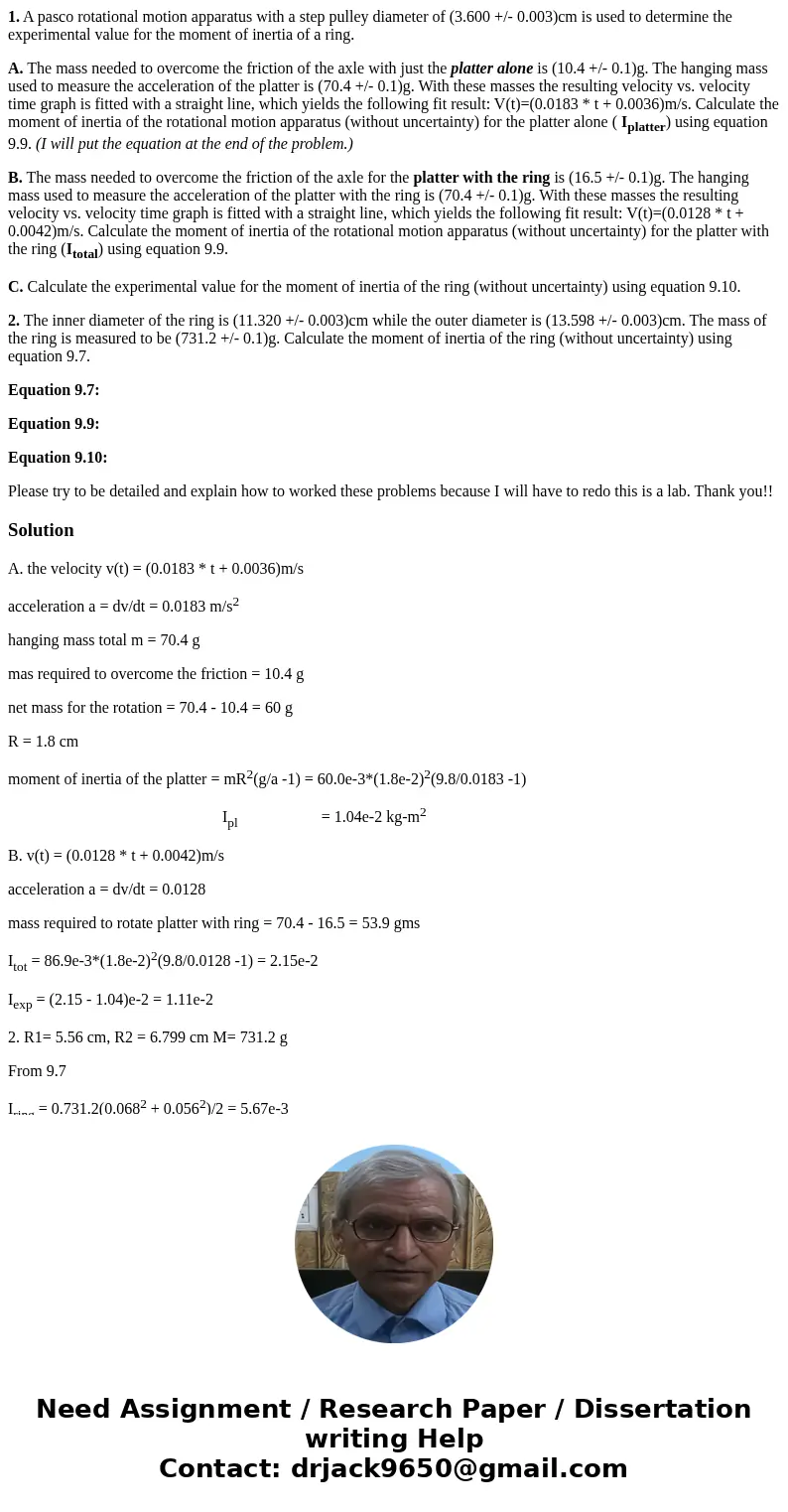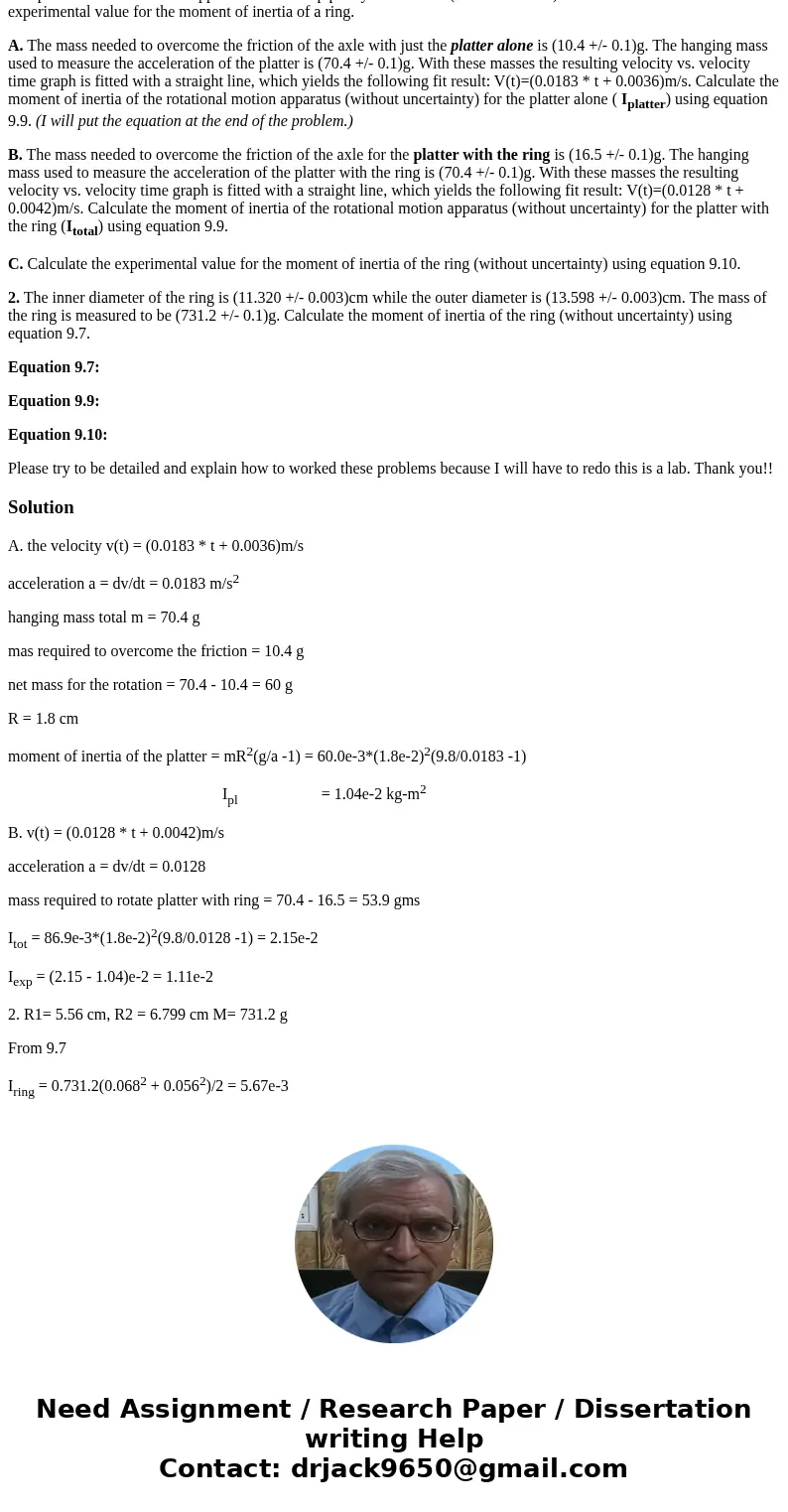1 A pasco rotational motion apparatus with a step pulley dia
1. A pasco rotational motion apparatus with a step pulley diameter of (3.600 +/- 0.003)cm is used to determine the experimental value for the moment of inertia of a ring.
A. The mass needed to overcome the friction of the axle with just the platter alone is (10.4 +/- 0.1)g. The hanging mass used to measure the acceleration of the platter is (70.4 +/- 0.1)g. With these masses the resulting velocity vs. velocity time graph is fitted with a straight line, which yields the following fit result: V(t)=(0.0183 * t + 0.0036)m/s. Calculate the moment of inertia of the rotational motion apparatus (without uncertainty) for the platter alone ( Iplatter) using equation 9.9. (I will put the equation at the end of the problem.)
B. The mass needed to overcome the friction of the axle for the platter with the ring is (16.5 +/- 0.1)g. The hanging mass used to measure the acceleration of the platter with the ring is (70.4 +/- 0.1)g. With these masses the resulting velocity vs. velocity time graph is fitted with a straight line, which yields the following fit result: V(t)=(0.0128 * t + 0.0042)m/s. Calculate the moment of inertia of the rotational motion apparatus (without uncertainty) for the platter with the ring (Itotal) using equation 9.9.
C. Calculate the experimental value for the moment of inertia of the ring (without uncertainty) using equation 9.10.
2. The inner diameter of the ring is (11.320 +/- 0.003)cm while the outer diameter is (13.598 +/- 0.003)cm. The mass of the ring is measured to be (731.2 +/- 0.1)g. Calculate the moment of inertia of the ring (without uncertainty) using equation 9.7.
Equation 9.7:
Equation 9.9:
Equation 9.10:
Please try to be detailed and explain how to worked these problems because I will have to redo this is a lab. Thank you!!
Solution
A. the velocity v(t) = (0.0183 * t + 0.0036)m/s
acceleration a = dv/dt = 0.0183 m/s2
hanging mass total m = 70.4 g
mas required to overcome the friction = 10.4 g
net mass for the rotation = 70.4 - 10.4 = 60 g
R = 1.8 cm
moment of inertia of the platter = mR2(g/a -1) = 60.0e-3*(1.8e-2)2(9.8/0.0183 -1)
Ipl = 1.04e-2 kg-m2
B. v(t) = (0.0128 * t + 0.0042)m/s
acceleration a = dv/dt = 0.0128
mass required to rotate platter with ring = 70.4 - 16.5 = 53.9 gms
Itot = 86.9e-3*(1.8e-2)2(9.8/0.0128 -1) = 2.15e-2
Iexp = (2.15 - 1.04)e-2 = 1.11e-2
2. R1= 5.56 cm, R2 = 6.799 cm M= 731.2 g
From 9.7
Iring = 0.731.2(0.0682 + 0.0562)/2 = 5.67e-3


 Homework Sourse
Homework Sourse